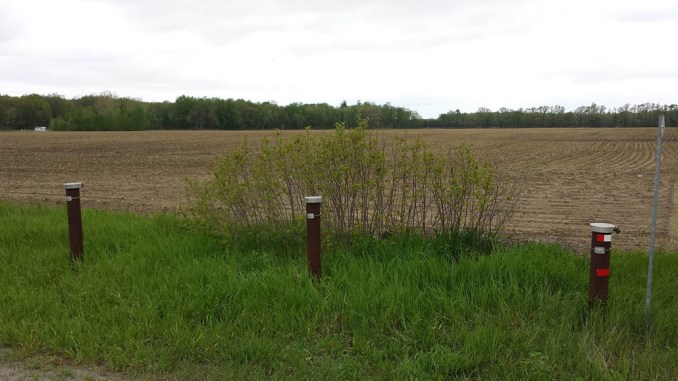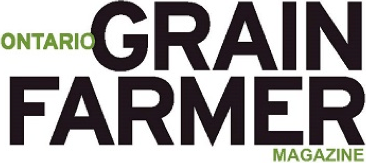Changing agricultural landscapes and groundwater quality in sensitive aquifers
Principal Investigator
Jana Levison
Research Institution
University of Guelph
External Funding Partners
Ontario Ministry of Agriculture, Food and Rural Affairs (OMAFRA) New Directions; Dairy Farmers of Ontario; Ontario Federation of Agriculture (OFA); Fertilizer Canada
Project Start
January 2014
Project End
February 2017
Objectives
- Study groundwater quality under corn-soybean-wheat rotation scenarios such as: i) cash crops only; ii) including green manures with fall termination after wheat in contrast to fields receiving manure; iii) increased tile drained area; and iv) simulating extreme storm events following nutrient application.
- Determine critical or threshold scenarios to mitigate nutrient transport to sensitive groundwater bodies.
- Examine several geological conditions encountered across Ontario including: i) sandy aquifers; ii) thin sediments overlying fractured bedrock aquifers; and iii) thick sediments overlying fractured bedrock aquifers.
- Identify critical cases for sensitivity to contamination using numerical modelling supported by field research.
- Provide recommendations for nutrient management policies.
Impact
- The improved understanding of the transport of nitrate from the surface to groundwater related to crop and weather changes at three locations in southern Ontario may contribute to recommendations about how land use practices may be adjusted, if needed, to mitigate rural water quality impacts.
Scientific Summary
In Ontario, groundwater is the main, and often only, water source for farm use and rural residents. While agricultural activities and climate are changing, it is essential that groundwater quality is continually protected. In Ontario, acreages for corn, soybean and winter wheat are increasing while production of certain livestock (i.e., beef and dairy cattle, pigs) is decreasing. It is more sustainable – that is, less expensive, more socially responsible and better for the environment – to maintain a clean groundwater supply than to treat water once it has been contaminated. With more cash crops requiring nutrient inputs and less manure available, as well as the desire for increased yields, more synthetic nutrients may be applied. Weather patterns with more intense storms could also impact nutrient fate in the environment. A comprehensive understanding of evolving cropping systems of corn-soybean-wheat production and their potential impact on groundwater quality in various geological conditions encountered across Ontario is necessary to ensure sensitive rural water supplies are continually protected for agricultural and potable water uses.
The project aimed to define and quantify the transport of excess nutrients, specifically nitrate from nitrogen application, related to cash cropping into groundwater to anticipate and reduce any potential impacts on water quality. The field data were collected from twenty-five groundwater monitoring locations in southern Ontario (Acton, Guelph, and Norfolk County). Advanced computer modelling of groundwater systems, agricultural nutrient management expertise and well water monitoring data were used together to find critical cases for sensitivity to contamination. Various soils and geological conditions found across Ontario at three study locations were characterized and used in the models. Nitrate concentrations vary with time, depth and location. Each of the three research sites displayed different trends of nitrate contamination. The Guelph site experienced peaks in nitrate concentrations in spring of 2016 after a drought period in summer of 2015. The Norfolk site displayed concentrations which align with what is expected from a continuous nitrate source, although certain wells had concentration peaks like the Guelph site. The Acton site experienced consistent nitrate concentrations which did not vary significantly. Evidence from groundwater geochemical analyses suggests that denitrification may be occurring at some of the deeper monitoring wells. Dissolved oxygen, dissolved organic carbon, and sulphate concentrations and their contributions to redox state impact denitrification, typically resulting in decreasing concentrations of nitrate with depth. Research sites which are continually cropped as corn (Guelph site) result in elevated nitrate-nitrogen concentrations, while sites which have high potential for contamination from manure (Acton site) seem to experience increased soil/crop uptake resulting in lower than expected nitrate-nitrogen concentrations. Climate appears to be a driver of contamination; the more variable the precipitation and temperature patterns the higher potential for contamination. The depth of monitoring wells and drainage/hydraulic conductivity of geologic material results in decreased concentrations from better drained material likely a result of dilution. Poorer drained materials result in more consistent nitrate concentrations since these geologic layers are not drained fully of nitrate each year resulting in a constant buildup and source in the subsurface. Vadose zone modelling results suggest that DRAINMOD can be used to quantify the nitrate in agricultural fields. A groundwater model (developed using HydroGeoSphere) was successfully calibrated using groundwater monitoring well data at the Norfolk site. Climate change and crop scenarios will be simulated to determine vulnerable areas to nitrate contamination in southern Ontario.
The results can be applied to nutrient management policies and to help to improve “right time, right place, right rate” application principles for Ontario grain farmers. This research yields an improved understanding of the fate of nitrate in groundwater related to crop and weather changes, to determine how agricultural practices may be adjusted to mitigate rural water quality impacts in Ontario. This topic is of extreme importance since groundwater is the main water source for farms and for rural residents. Studies have shown that legacy land use (from up to 25 years in the past) has a significant impact on present groundwater nutrient contamination; thus current actions will greatly impact future groundwater quality. Gleaned principles can be applied to on-farm nutrient management and wellhead protection initiatives across the province. Groundwater is a resource important for farm viability in Ontario, and results of this research will contribute to groundwater protection initiatives related to changing agriculture.
Publications

Read more in Ontario Grain Farmer: Monitoring Groundwater Pollution, by Janan Shoja Doost (December 2017)

